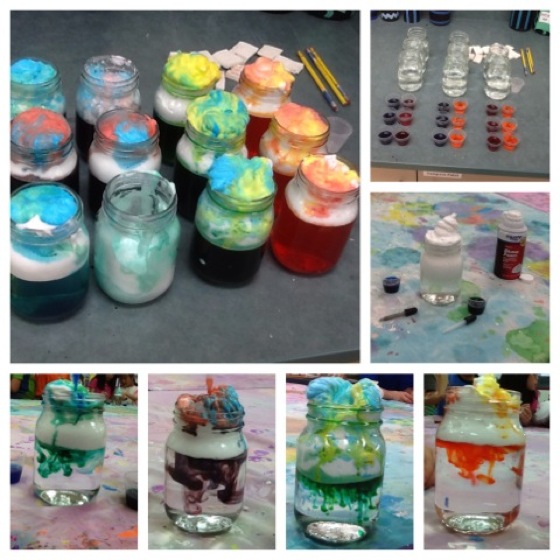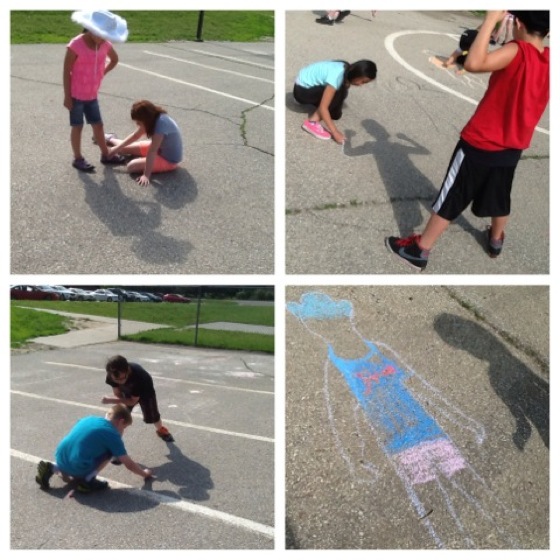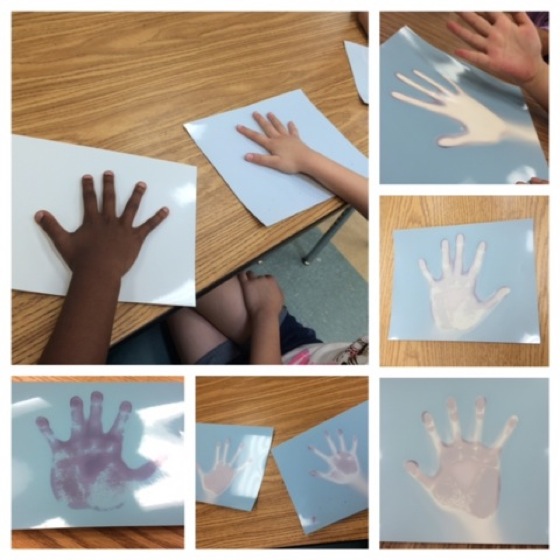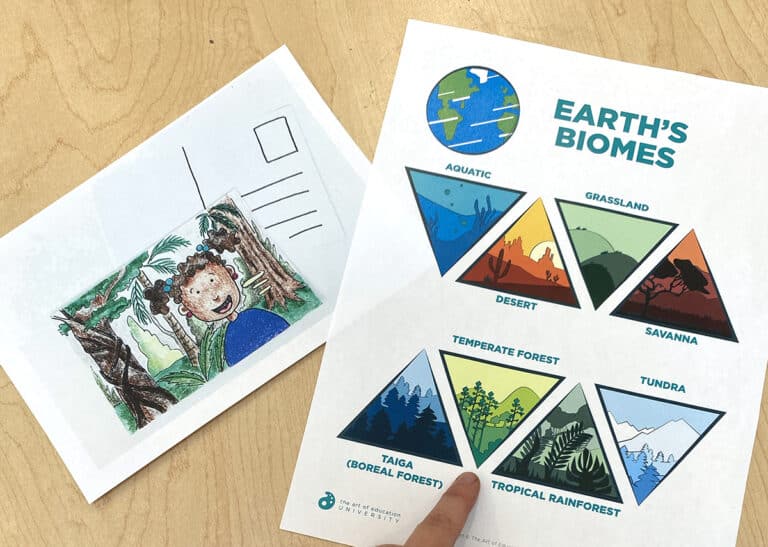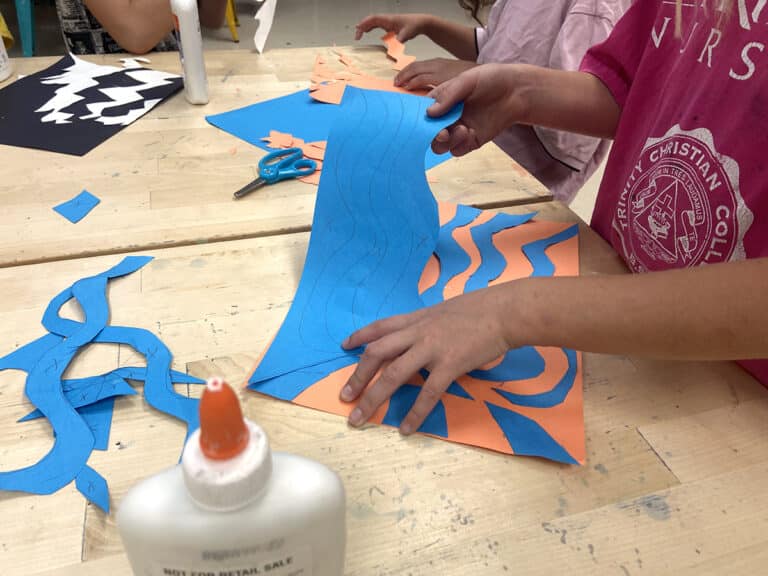It’s no secret that the art room is generally thought of as one of the most enjoyable classrooms in the school. However, before breaks and at the end of the year, even art teachers need to pull out some extra tricks to keep kids engaged. Below are 6 fun activities to pull out during those challenging times. For example, these were great when my school had to make up snow days in June!
Cloud Jars
This is truly a magical experience. Not only can you incorporate science and explore how clouds hold precipitation, but you can review color mixing too! I divided my students into pairs. Each pair got a cloud jar. The cloud jar is just a clear jar filled with water with Barbasol shaving cream on top. Then, students poured water tinted with food coloring into their jars and waited for the cool results! Depending on how many jars you have, you might need to make groups of three or dump and re-fill jars to take turns. It is a huge hit!
Jeopardy
This works just like the TV game show, but with specific art categories (see image). The harder the question, the more money it’s worth. I generally split my classes into teams of three. One team picks a dollar amount and category. If they don’t get the question correct, the question moves to the next team. If no team can figure it out, I announce the answer and the “money” is forfeited for all. Don’t forget to have a final jeopardy question for the end of the game!
Art Bingo
I got this fantastic idea from my good friend, and colleague, Deb Leventhal. Students fold a normal, letter-sized piece of paper in half four times, then unfold for a bingo board of 16 spaces. There is no free space. As a class, we come up with a word bank of 30 to 40 words (depending on time and age group). I write the word bank on the board. This word bank generally consists of objects or people that are relatively easy to draw. It is art bingo after all! Students then choose 16 of the words from the word bank. They write each word at the bottom of a space, then go back and illustrate the words.
To play this with multiple classes back-to-back, I have a cup with cut up papers numbered 1-40. The word bank is numbered as well, so I simply call out the word listed next to the number. That way, I don’t have to rewrite new words on new scraps for each class’s word bank. To play multiple games, I just place a checkmark next to the words I’ve called to double-check when bingo’s are called. Then, I can simply erase the check marks, put the paper pieces back in my drawing cup, and start a new bingo round. We mark cards with small flat disks I found in my art room, but cut up, scrap squares of construction paper work just as well. See more Bingo ideas here and here!
Shadow Drawing with Sidewalk Chalk
A quick, fun lesson on action and silhouettes. Students take turns tracing each other, then “dress and accessorize” themselves. This was especially fun when one of my classes had hat day!
Sidewalk Chalk Paint
To make sidewalk chalk paint mix 1 part cornstarch, 1 part tempera paint and 3 parts water. My recommendation is to start with less paint than you think you might need, as you can always add more. You could use this to decorate for a special event, work on color mixing, or create a temporary mural!
Light Prints/Photograms
This activity is great for younger students. I took old photo paper that I had leftover from my darkroom photography course in college. I did a brief, age-appropriate explanation of what the paper was actually used for, and then we placed our hands over the paper and let them develop in the light of the classroom to create “artist hand photograms”.
Other ideas I would love to try include art around-the-world (like the rapid-answer math facts activity done in classrooms) and light graffiti.
What do you do for “fun” in the art room?
What are some of your students’ favorite art games?
Magazine articles and podcasts are opinions of professional education contributors and do not necessarily represent the position of the Art of Education University (AOEU) or its academic offerings. Contributors use terms in the way they are most often talked about in the scope of their educational experiences.
